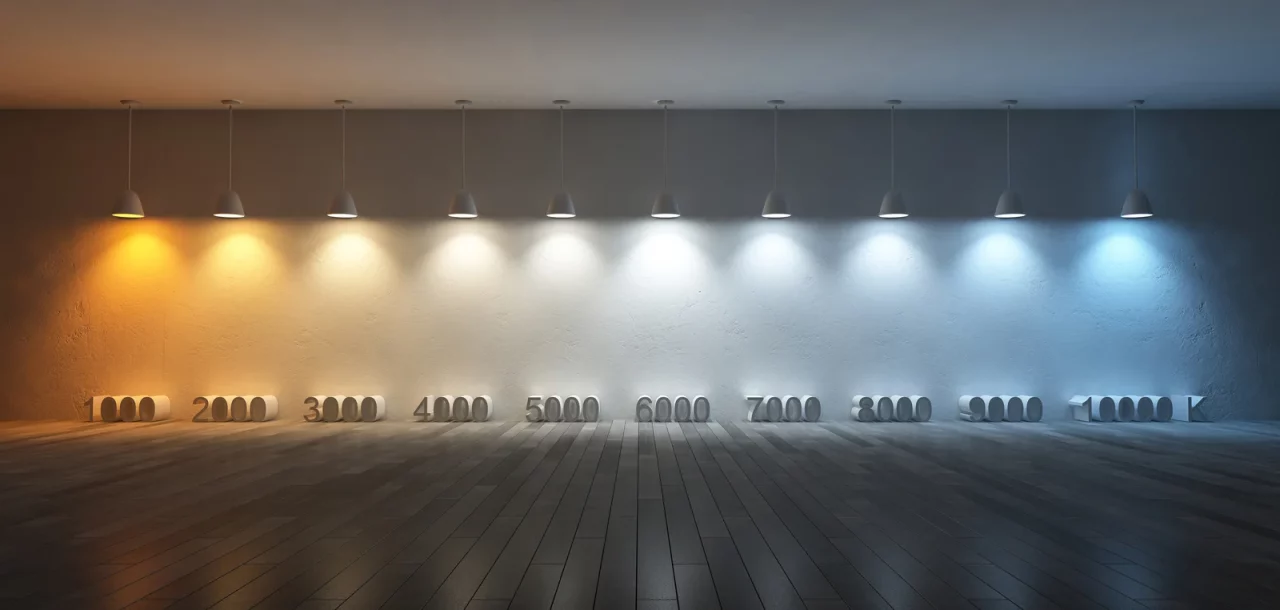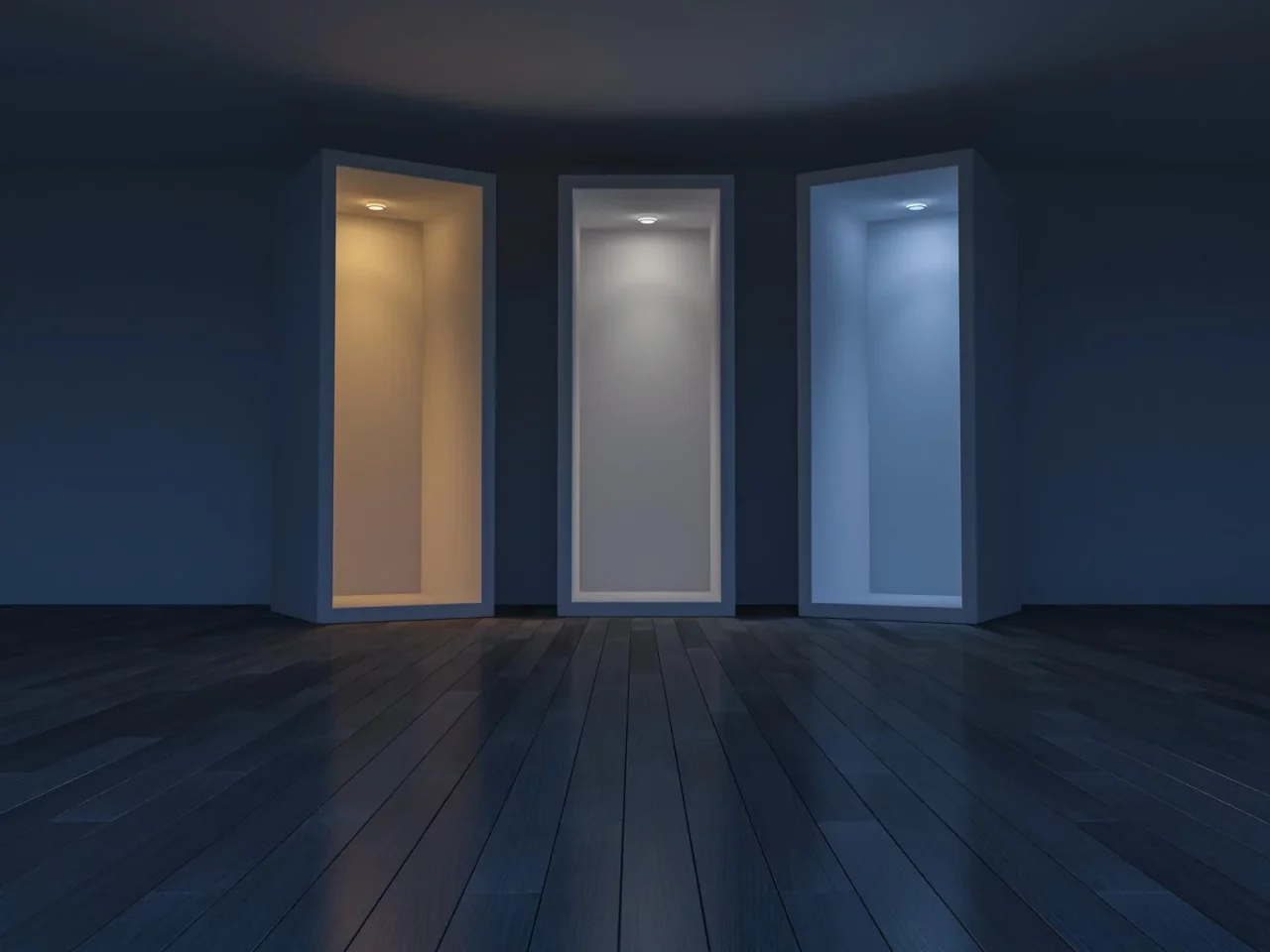Warm Light vs. Cool Light: Which is Better for Your Home?
Your home’s lighting temperature sets the mood of your life and impacts how you use each space. This guide tackles the great debate of warm light vs. cool light — and helps you craft the perfect atmosphere in every room. Learn how to harness the power of light to transform your ambiance into an ecosystem that reflects your personality and needs, where every corner feels perfectly lit.
What is Light Temperature?
The temperature of light has an often overlooked impact on our homes. Beyond aesthetics, it subtly influences mood, focus, and sleep patterns, shaping the atmosphere and functionality of each space. It pressures our psychology and emotions – subtly tweaking our psyche. From the calming glow of warm light to the invigorating crispness of cool light, understanding this spectrum helps you to create a home that reflects your personality and needs, one where every space interacts with you exactly as it should – where you dominate it, not the other way around.
Light temperature refers to the color appearance of light, which is measured on the Kelvin scale. The Kelvin scale quantifies the color temperature of light sources. Lower Kelvin temperatures, such as 2700K, emit a warm and cozy light similar to candlelight, while higher Kelvin temperatures, like 5000K or above, produce a cool and bright light resembling daylight.

Warm Light and Cool Light
Is warm or cool light better? Warm light is cozy and incandescent charming, cool light boasts, invigorates, and blankets everything with a modern edge. While team “warm light” argues it fosters relaxation and creates intimate atmospheres, team “cool light” advocates its ability to enhance focus, boost energy, and mimic natural daylight.
The Characteristics of Warm White vs. Cool White Light
- Warm light provides a comforting embrace. Psychologically, it promotes a sense of calm, reducing stress and encouraging conversation. Aesthetically, it flatters complexions, creating a warm and inviting atmosphere perfect for living rooms, bedrooms, and dining areas.
- Cool light invigorates your home with a crisp and energetic feel. Psychologically, it stimulates the mind, enhancing productivity and aiding in detail-oriented tasks. Aesthetically, it brightens and enlarges spaces, highlighting details and cleanliness, making it ideal for kitchens, home offices, and bathrooms.
Warm Light and Its Psychological Effects on Mood and Ambiance
Warm light ranges between 2700K to 3000K, evoking a spectrum of positive psychological effects to transform your mood and ambiance:
- Sense of Calm: Promotes relaxation and sleep, making it ideal for winding down after a long day, and creating a peaceful environment.
- Reduced Stress: Lowers cortisol levels, the stress hormone. This translates to feeling more at ease and less tense.
- Increased Intimacy: Encourages closeness and connection by creating an intimate atmosphere.
- Cozy and Inviting Ambiance: This makes a space welcoming and inviting, highlighting the warmth and natural beauty of your surroundings.
Cool Light and Its Psychological Effects on Productivity and Alertness
Cool light radiates in the spectrum of 4000K to 5000K, stimulating the mind and boosting alertness:
- Enhanced Focus: By feeling more awake and alert, you improve your ability to concentrate and complete tasks efficiently.
- Increased Productivity: Enhances your energy levels and motivation, especially in work-related settings.
- Improved Detail Perception: This makes it easier to see details and nuances, which can be beneficial for tasks like reading, writing, or working with intricate designs.
Warm Light vs. Cool Light
Let’s explore how light temperature can enhance the functionality and mood of different rooms:
Living Room
Warm light creates a comfortable and inviting atmosphere for unwinding, reading, and socializing. On the contrary, consider cooler options if the space will be used for more active pursuits like playing games or engaging in energetic activities.
Kitchen
Cool light is generally preferred for tasks like cooking and meal prep. It provides a bright and energizing ambiance that can help with food preparation by offering good visibility and reducing eye strain.
Bedroom
Warm Light is the best choice to promote a sense of tranquility and calm, which is perfect for winding down before sleep.
Bathroom
Consider the power of warmth for a spa-like experience and cool light in mirrors for tasks such as applying makeup, shaving, and personal grooming.
Home Office
Cool light is the best choice for spaces used for enhancing concentration and productivity.

Light Temperature & Circadian Rhythms
The circadian rhythm, which dictates sleep, alertness, and hormone production, is crucially influenced by light temperature. Warm light suppresses alertness and promotes melatonin production for restful sleep. In contrast, cool light invigorates our system, boosting focus and energy. Disrupting our natural rhythm with excessive cool light at night leads to sleep disturbances, mood swings, and long-term health issues. Conversely, relying solely on warm light throughout the day can leave us feeling sluggish and unproductive.
Tips for Balancing Warm Light vs. Cool Light
1. Understand the Basics
Warm light is ideal for creating an inviting atmosphere in living spaces, while cool light is great for enhancing focus and productivity in work areas.
2. Layer Your Lighting
Use task lighting with cooler tones in workspaces and brighter overhead lights with warmer tones in relaxation areas.
3. Dimmers and Smart Lighting Systems
Opt for lighting fixtures that allow you to control both intensity and color temperature based on your needs throughout the day.
Factors to Consider When Choosing Between Warm Light or Cool Light
Consider the following factors when choosing the right lighting:
Room Function
Warm light is often preferred for cozy spaces like bedrooms and living rooms, creating a welcoming and relaxing ambiance. On the other hand, cool light is ideal for task-oriented areas such as home offices and kitchens, where clarity and focus are key.
Personal Preference
Some individuals may feel more comfortable and productive under cool light, while others may prefer the warmth and ambiance of soft and warm lighting.
Decor Style
Warm light tends to complement traditional or rustic decor styles, adding a sense of intimacy and charm. In contrast, cool light can enhance modern or minimalist interiors with its crisp and clean aesthetic.
Smart Lighting Solutions
Imagine a home where the lighting adapts to your needs and moods, seamlessly transitioning from energizing cool tones in the morning to calming warm hues in the evening. This fantasy has now become a reality thanks to smart lighting solutions. Pre-programmed schedules can automatically adjust light temperature throughout the day.
Wake up to a gentle sunrise and gradually transition from warm hues to cool light — mimicking the natural rhythm of your body. As the sun sets, the smart system seamlessly switches back to warm tones, creating a calming ambiance that promotes relaxation and prepares you for sleep. Smart lighting even allows you to adjust the intensity of each light source, creating the perfect ambiance for any activity. This technology is about creating a home that actively supports your well-being and optimizes your daily routines.
Forget “either/or” — Warm light bathes your home in cozy comfort, ideal for relaxation and socialization. Cool light invigorates with its crisp energy, perfect for tasks and focus. But don’t just think aesthetics. Consider how light temperature impacts your mood, well-being, and even sleep. Explore different options in each room, from the warm glow of a bedroom to the cool brightness of your kitchen. Remember, the perfect light is the one that reflects your unique needs and creates a home that truly shines. Find your balance, and disregard the zealotry of warm light vs. cool light — go big, go bold, pick both.
